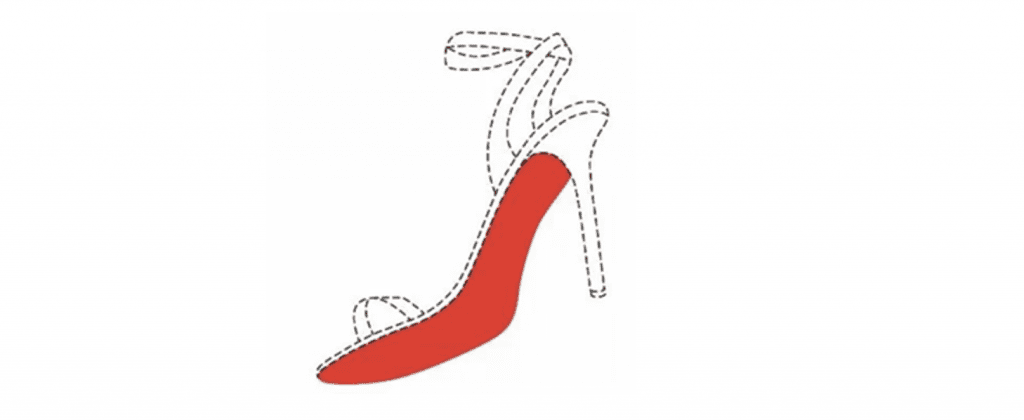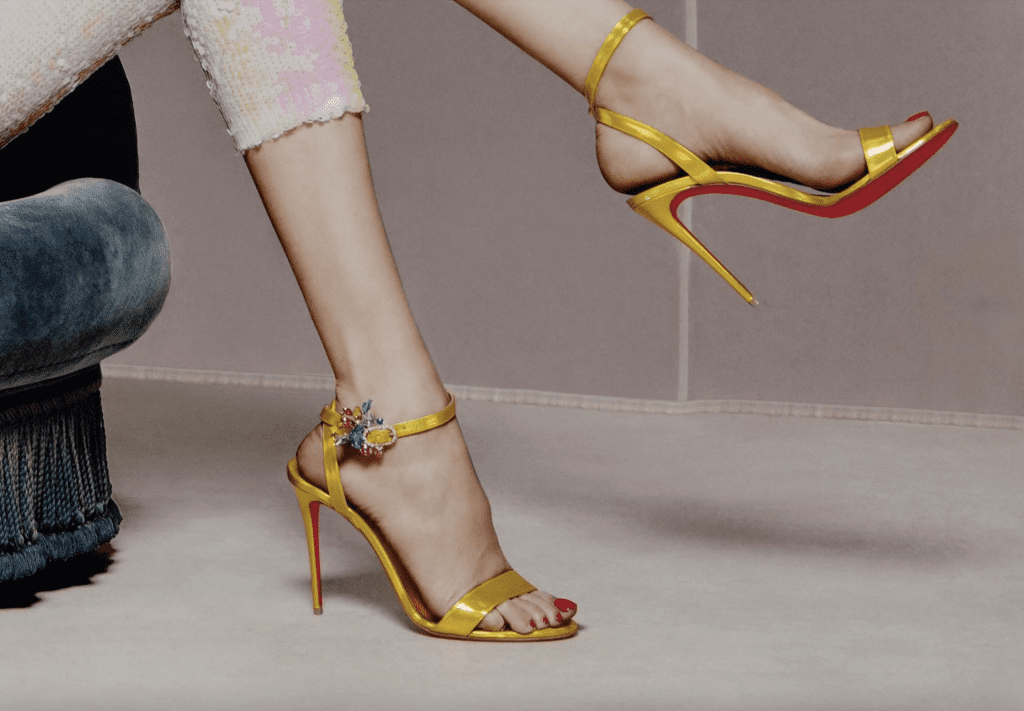A district court in Rio de Janeiro has sided with Christian Louboutin in the latest round of its bid to register its red sole as a trademark in Brazil. On the heels of the Brazilian Patent and Trademark Office (“BPTO”) rejecting Louboutin’s trademark application for registration for its use of the color red (specifically, Pantone 18-1663 TPX) on high-heel shoe soles in May, counsel for Louboutin sought an annulment of the application’s rejection. In a preliminary – but nonetheless, notable – victory for Louboutin, Judge Márcia Maria Nunes de Barros of the 13th Federal Court of Rio de Janeiro has handed the French footwear brand an injunction, making for one of the first administrative-level assessments of the registrability of “position” trademarks in Brazil.
Some Background: The Federal Court of Rio de Janeiro-ordered preliminary injunction follows from the BPTO’s refusal to register Louboutin’s mark this spring. Citing the language of the Trademark Manual (namely, “the application of a non-distinctive sign on a support will not be registrable as a position mark”), the BPTO held in a one-page decision that Louboutin’s mark – which the trademark office characterized as “consisting solely of the color red” positioned on the sole of women’s high-heeled footwear – lacks the necessary distinctiveness to warrant registration. Finding that the red sole mark is not inherently distinctive, the BPTO swiftly rejected Louboutin’s application and opted not to examine the mark as a whole, including its position on the Louboutin footwear. Louboutin filed suit with the Federal Court to challenge the BPTO outcome.
In her decision on August 10, as first reported by TFL, Judge de Barros stated that the BPTO erred in rejecting the application, primarily because in its “preliminary and non-exhaustive examination,” it failed to consider the element of position as “an inseparable part of the mark,” and similarly failed to take into account the potential for acquired distinctiveness. In terms of the latter, Judge de Barros stated that Louboutin’s use of the red sole on high-heeled shoes “deviates significantly from the habits and/or customs of the footwear industry and is totally arbitrary, being easily recognizable at first sight by and memorable [to] the interested public.”

Distinctiveness in short: “It is evident that there is an extremely high level of association” between the Louboutin brand and the red sole mark, which it has used consistently since 1992 and which the consuming public views as an indicator of source, making it “fully distinctive, and therefore, capable of functioning as a trademark,” according to the court.
Even if it is not inherently distinctive, Judge de Barros held that Louboutin’s mark has acquired distinctiveness thanks to the company’s “effective and prolonged use [of the red sole] and the enormous success it has achieved.” For instance, there is “extensive evidence” – in the form of unsolicited media attention, paparazzi imagery, the results of Google searches for “red soled heeled shoes,” etc. – that the application of the color red on the soles of high-heeled shoes is likely to be “perceived by the relevant public as an indication of origin linked to Christian Louboutin, distinguishing its products from those of other competitors in the market and exercising a trademark function.”
The court also cited evidence that red sole registrations were granted in favor of Louboutin in the U.S., Canada, Mexico, Great Britain and Northern Ireland, BENELUX, Kuwait, Lebanon, EUIPO, India, Singapore, Norway, France, Indonesia, Macau, Malaysia, Panama, Russian Federation, United Arab Emirates, Vietnam, WIPO, and Peru, and stated that there are decisions from the Office for Harmonization in the Internal Market, the European Union Intellectual Property Office, the Cour d’Appel de Paris, and the Court of Justice of the European Community for the registrability of the mark.
All the while, the court noted recent additions to the Trademark Manual, including ones that “provide for the registrability of [position] trademarks” – which is a new development since Louboutin first filed the relevant application back in 2009 – and that govern the analysis of applications for registration for position marks, as well as other decisions from the BPTO that allowed for the registration of position marks. For instance, the court pointed to the BPTO’s registration of OSKEN’s trademark for “three identical eyelets on the upper part of a sneaker,” which the court said “has visual elements somewhat comparable to those” in the case at hand. As a result, the BPTO’s failure to register the red sole mark creates “legal uncertainty regarding the requirements for granting position marks, [including] assessing the distinctive character without considering the element of position as an inseparable part,” the court stated.
Finally, Judge de Barros held that the BPTO’s rejection of the Louboutin red sole application is “the equivalent to a declaration” that Louboutin’s mark is “in the public domain, implying a complete impediment to the legal exercise of the respective rights, and potentially causing enormous damage to its owner and the consuming public.” Against that background, the court granted Louboutin’s request for a preliminary injunction, essentially putting the application rejection on hold for the duration of the case.
“The preliminary injunction is aimed at staying the effects of the [BPTO’s] rejection,” Licks Attorneys’ Karlo Tinoco, who represents Louboutin in enforcement matters in Brazil, told TFL. As such, it means that the BPTO must “publish on the database and Official Gazette that this matter is being discussed at the court,” and from a practical point of view, it means that third parties “cannot argue that they assumed the red sole [is] in public domain.”
THE BIGGER PICTURE: No small matter, the case at hand marks the second time that a position mark has been assessed at the administrative level since the BPTO began accepting applications for position trademarks in October 2021. “While position marks were previously acknowledged by the BPTO and by the courts, they had yet to qualify for separate trademark registration,” per attorneys Ana Clara Ribeiro and Paula Giacomazzi Camargo. As a result, “most brand owners registered them as figurative or three-dimensional marks.”
Specifically, the BPTO defines position marks that are eligible for registration as consisting of: “a distinctive set capable of identifying products or services and distinguishing them from others that are identical or similar, provided that: (1) it is formed by the application of a sign in a singular and specific position on a given support; and (2) the application of the sign in said position of the support can be dissociated from any technical or functional effect.”
As indicated by cases like this one, companies’ efforts to amass specific protections in Brazil for marks that are characterized by their particular position on a product comes with the potential for pushback, as the BPTO and courts actively wrangle with the workings of this new mode of protection.
The case is Louboutin v. INPI-Instituto Nacional Da Propriedade Industrial, 5082257-22.2023.4.02.5101/RJ.











